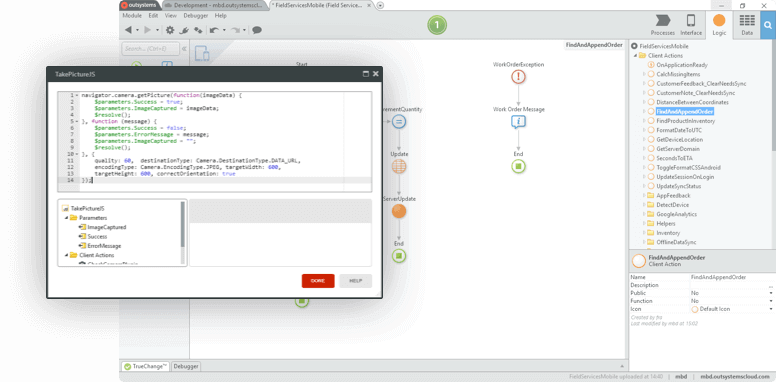Businesses, regardless of where they are in their digital transformation journey, would probably know that transformation is not a one-off event nor acquiring a unique technology. It is more than just adding a new feature to an old offering or introducing a new platform to modernize a legacy system.
Digital transformation is a process of leveraging technologies and tools to enhance workflow and serve customers better. Perhaps more critically, it starts at the core of a business’ operations, its workforce, and business processes.
However, many organizations are also finding out, sometimes in a costly way, that overhauling their processes to better their business needs is not easy nor straightforward.
IT teams in every enterprise often find themselves overwhelmed with demands for new app development, in addition to maintaining, managing, and upgrading old ones. While outsourcing these functions may have been a viable option at some point, it is longer efficient nor feasible to depend on third-party vendors to manage a company’s app portfolio.
Enterprises need another solution which could relieve the workload of the developers, and at the same time does not slow down their transformative processes. Businesses need a low-code app development platform, that empowers a whole host of citizen developers along with the professional coders to build app and solutions, to support the organizations’ digital transformation agenda.
The low-code and no-code software development platforms have been rightfully gaining tractions among all the forward-thinking enterprises, and it is not difficult to see why. A modern low-code platform moves businesses from the pro-code environment of the traditional IT DevOps function to a nimbler development methodology. By using intuitive visual, drag and drop interfaces, and familiar business commands, these platforms enable quick app building, while automatically handling the base-level code, scripts, and integrations, without the need for complex infrastructure or complicated frameworks.
Digitization made simple with low-code app builders
Low-code platforms bring the development exercise to the coalface, as personnel tasked with a specific function could build their apps to perform their duties better, with no coding skill required. If further tweaking or optimization required, an experienced developer could still manually modify the app. Thanks to the ease of customization, full integration capability, and speed of deployment, businesses are now able to deliver new applications and services quickly, which helps differentiate themselves in the market.
But quick deployments aside, low-code app development tools present the platform for business leaders to walk the walk on adopting agile processes and methods to develop apps iteratively with continuous feedback, collaboration, and improvement. Currently, many organizations are still operating in a siloed environments, which are not only restricting productivity but also causing misalignment of goals due to lack of a single source of truth. Low-code platforms empower all the different business units within a company, such as IT, operation, sales, marketing, finance, and even HR to collaborate in a common language.
The low-code approach allows businesses to start with small initiatives, evolve and subsequently scale to accelerate their transformation journey. By quickly developing and deploying a minimum viable product (MVPs), companies could learn from immediate feedback, optimize and then scale up the solutions with further improvements. And with no complicated and expansive coding involved, businesses could easily extend to more channels such as mobile functions or self-services portals, without incurring high developmental costs.
Understandably, picking the right low-code platform could be a daunting task, given how critical the platform could be in determining the trajectory of the digital transformation journey. Tech Wire Asia has reduced the choices down to two providers that businesses should consider partnering to not only adopt more modern and agile development methods but to shift their digital transformation journey into overdrive.
OUTSYSTEMS
OutSystems is a leading low-code platform provider that provides unbeatable speed when it comes to building innovative business apps. Every aspect of the company’s platform, such as high-productivity and visual development environments to robust capabilities that deploy and manage the apps, is crafted and optimized by engineers with an obsessive attention to detail.

Source: OutSystems
The OutSystems platform’s full-stack visual development framework offers drag-and-drop functionality for business processes, logic, and data models, along with UI templates and components, to create cross-platform apps. The highly versatile platform allows users to alter their work at the micro-level by modifying the code, using languages, such as C#, HTML, JavaScript, and SQL, when needed.
And thanks to their single-click deployment feature, apps and updates can be delivered quickly, with the platform tracking all changes. It also handles database scripts and deployment processes. A number of OutSystems customers state that they have reduced their development hours by 75 percent and gone to market three times faster using the Outsystems platform.
Integration with legacy stacks and systems, including ERP, CRM solutions, and customized apps is effortless. Users can choose from a variety of pre-built connectors, build their own connectors or integrate with SOAP web services and REST APIs without the need for coding.
APPIAN
Much like OutSystems, Virginia-based Appian also aims to fast-track organizations’ digital transformation agenda by simplifying the business app development process, unifying organization-wide data into simple views that facilitate fast business actions. With this platform, companies could potentially eliminate the repetitive, high-volume tasks and ineviatble errors by integrating current legacy systems with this, the very latest industry-leading RPA solution.

Source: Appian
The platform comes standard with user-friendly features that allow business leaders to unite and orchestrate all of the enterprise data, systems, and web services without the need for complicated code. Appian’s robust connectors and other integration tools allow for companies to get all the information, regardless of where it resides in their systems, to provide a single source of truth.
In delivering a consistent user experience throughout the development process, the platform is sure to improve app maintenance and management and minimize end-user training, which in turn increases development-to-deployment speeds while decreasing the cost of development. Users are also given the ultimate UX design control tools and excellent flexibility in designing a more custom look-and-feel, thanks to Appian’s UI elements palette.
Appian can be deployed in the cloud, on-premise, or in a hybrid setup, similar to the Outsystem platform, depending on the specific data storage and business compliance requirements.
Source: techwireasia











